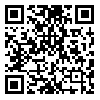Volume 25, Issue 4 (1-2020)
Back to this Issue |
Back to browse issues page
Download citation:
BibTeX | RIS | EndNote | Medlars | ProCite | Reference Manager | RefWorks
Send citation to:



BibTeX | RIS | EndNote | Medlars | ProCite | Reference Manager | RefWorks
Send citation to:
Shamsalinia A, Ghadimi R, Ghaffari F. Design and psychometric assessment of the Persian version of the exercise self-efficacy tool in the elderly people: A mix method study. Journal of Hayat 2020; 25 (4) :366-379
URL: http://hayat.tums.ac.ir/article-1-3184-en.html
URL: http://hayat.tums.ac.ir/article-1-3184-en.html
1- Dept. of Principles and Techniques of Nursing, Ramsar Fatemeh Zahra School of Nursing and Midwifery, Babol University of Medical Sciences, Babol, Iran; Nursing Care Research Center, Babol University of Medical Sciences, Babol, Iran
2- Dept. of Social Medicine, Social Determinants of Health Research Center, Health Research Institute, Babol University of Medical Sciences, Babol, Iran
3- Dept. of Community Health Nursing, Ramsar Fatemeh Zahra School of Nursing and Midwifery, Babol University of Medical Sciences, Babol, Iran; Nursing Care Research Center, Babol University of Medical Sciences, Babol, Iran ,ghafarifateme@yahoo.com
2- Dept. of Social Medicine, Social Determinants of Health Research Center, Health Research Institute, Babol University of Medical Sciences, Babol, Iran
3- Dept. of Community Health Nursing, Ramsar Fatemeh Zahra School of Nursing and Midwifery, Babol University of Medical Sciences, Babol, Iran; Nursing Care Research Center, Babol University of Medical Sciences, Babol, Iran ,
Abstract: (4424 Views)
Background & Aim: Maintaining and improving the health of the elderly through effective interventions requires the recognition of their lifestyle, including exercise using a valid and appropriate culture-specific tool. The aim of this study was to design and evaluate the psychometric properties of a tool for measuring exercise self-efficacy in the elderly.
Methods & Materials: A sequential exploratory mixed method study was performed in the form of a questionnaire with two qualitative and quantitative sections in 2019. The qualitative section consisted of item generation including three stages: theoretical stage (targeted search of existing literature), field work (semi-structured interviews with the elderly) and final analysis (integration of the results from the two previous stages). In the quantitative section, the psychometric properties of the questionnaire was evaluated using face, content and construct validity as well as the reliability through internal consistency and stability.
Results: Out of 37 initial items, four items were removed after calculating the item impact score. Seven items were removed after assessing the content validity ratio and content validity index. Also, five items were omitted due to having a load factor less than 0.03. The result of exploratory factor analysis consisted of three factors “recognition”, “situational compatibility” and “self-control” which all together could explain 90.180% of the variance. The Cronbach’s alpha and the Intraclass correlation coefficient were found to be 0.957 and 0.949 respectively.
Conclusion: The data analysis approved that the designed tool can be used for measuring exercise self-efficacy among the elderly due to having acceptable reliability and validity, simplicity and a short completion time.
Methods & Materials: A sequential exploratory mixed method study was performed in the form of a questionnaire with two qualitative and quantitative sections in 2019. The qualitative section consisted of item generation including three stages: theoretical stage (targeted search of existing literature), field work (semi-structured interviews with the elderly) and final analysis (integration of the results from the two previous stages). In the quantitative section, the psychometric properties of the questionnaire was evaluated using face, content and construct validity as well as the reliability through internal consistency and stability.
Results: Out of 37 initial items, four items were removed after calculating the item impact score. Seven items were removed after assessing the content validity ratio and content validity index. Also, five items were omitted due to having a load factor less than 0.03. The result of exploratory factor analysis consisted of three factors “recognition”, “situational compatibility” and “self-control” which all together could explain 90.180% of the variance. The Cronbach’s alpha and the Intraclass correlation coefficient were found to be 0.957 and 0.949 respectively.
Conclusion: The data analysis approved that the designed tool can be used for measuring exercise self-efficacy among the elderly due to having acceptable reliability and validity, simplicity and a short completion time.
Send email to the article author
| Rights and permissions | |
 |
This work is licensed under a Creative Commons Attribution-NonCommercial 4.0 International License. |






